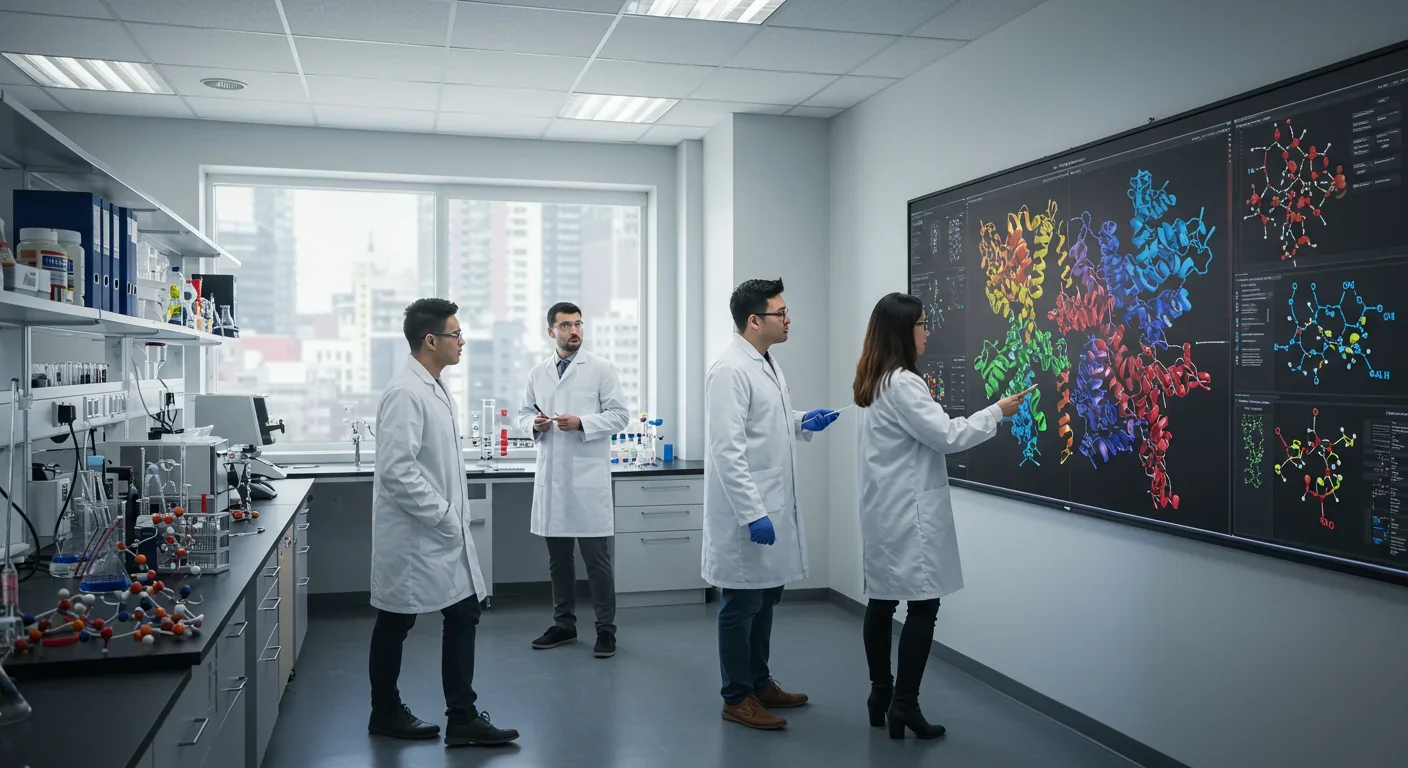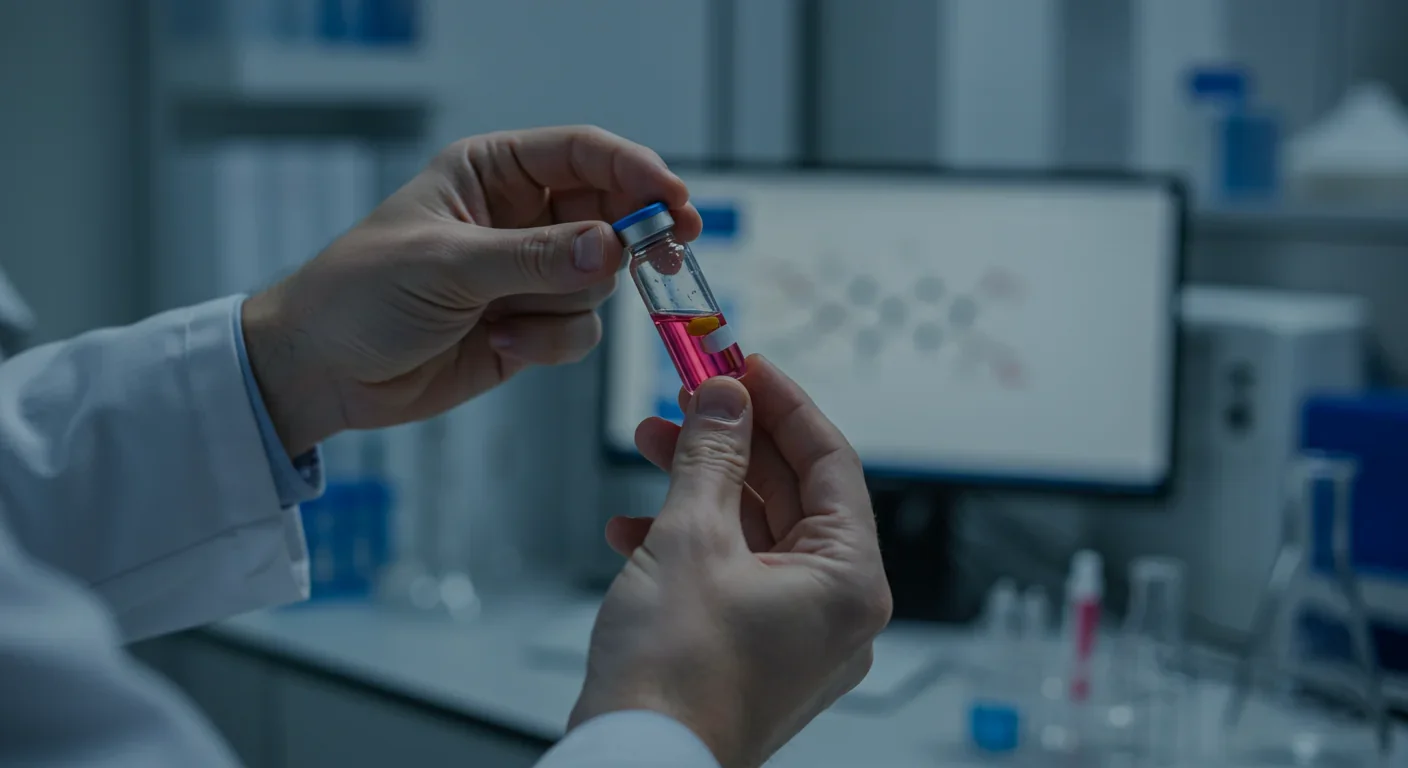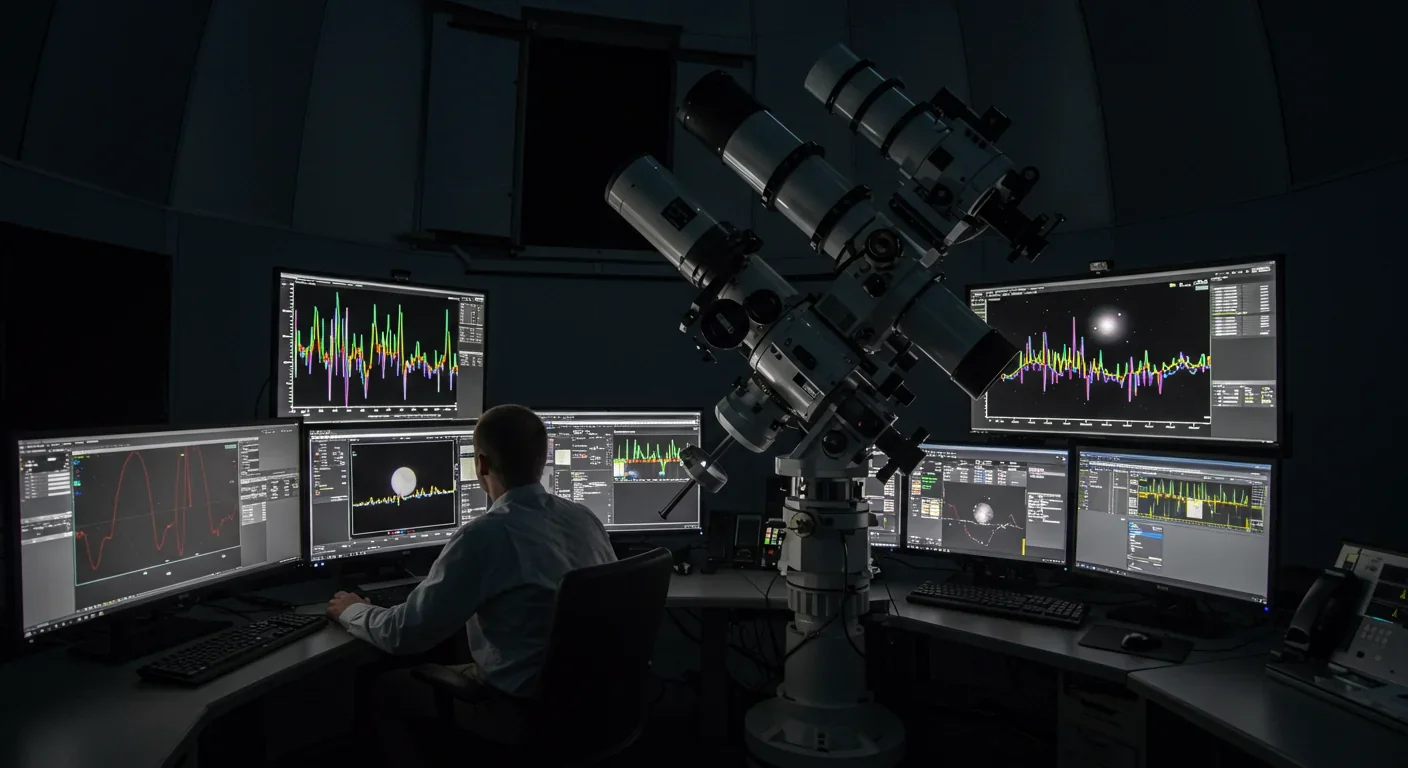Hidden Mold Mycotoxins Fueling Chronic Illness Epidemic

TL;DR: AI protein folding tools like AlphaFold have revolutionized drug discovery by predicting protein structures in minutes instead of years, accelerating development timelines from 10+ years to 3-6 years. With over 200 million structures now freely available, researchers worldwide can rapidly identify drug targets, design therapeutics, and understand disease mechanisms. While challenges remain—including the inability to model dynamic protein behavior and the need for experimental validation—the combination of AI prediction and generative design is ushering in a third generation of medicine, promising faster cures for rare diseases, pandemics, and complex conditions like cancer.

By 2030, scientists predict that diseases once considered untreatable will become manageable—not through decades of painstaking lab work, but through AI systems that can solve in minutes what took researchers years. AlphaFold's protein structure predictions, now covering over 200 million proteins, have already accelerated drug discovery timelines from 10+ years to as little as 3-6 years. The breakthrough that won the 2024 Nobel Prize in Chemistry is transforming how we understand disease, design drugs, and imagine the future of medicine.
In November 2020, a Zoom meeting sent shockwaves through the scientific community. John Jumper from Google DeepMind presented AlphaFold2's performance at the CASP14 protein structure prediction competition—and the results seemed impossible. The AI achieved over 90% accuracy in predicting protein structures, five times better than its closest competitor. For context, reaching 90 on the global distance test meant AlphaFold2 was performing at near-experimental precision, a threshold many thought would take another decade.
Proteins are the molecular machines that drive all life processes. Their function depends entirely on their three-dimensional shape—how a chain of amino acids folds into intricate structures. For 50 years, determining these structures required expensive equipment, specialized expertise, and months or years of laboratory work. X-ray crystallography and cryo-electron microscopy could resolve structures atom by atom, but the Protein Data Bank contained only about 180,000 experimentally determined structures by 2020. Meanwhile, the human genome alone encodes 20,000 proteins, and millions more exist across all life forms.
AlphaFold changed the equation. By July 2022, the AlphaFold database included roughly 200 million predicted protein structures covering nearly every cataloged protein from over one million species. A structure that would have consumed an entire PhD research program could now be generated in under ten minutes on a single GPU, at approximately 1% of the cost and time. As one biochemistry researcher put it: "Problems that took years and hundreds of thousands of dollars to solve experimentally can be solved with a simulation and 1% of the resources."
This wasn't just an incremental improvement—it was a phase transition. AlphaFold democratized structural biology, making accurate protein models available to anyone with an internet connection, eliminating the need for multimillion-dollar synchrotron facilities or electron microscopes.
AlphaFold's breakthrough came from rethinking the protein folding problem as a pattern recognition challenge rather than a physics simulation. Traditional computational methods attempted to model the forces between atoms, searching vast conformational space for the lowest-energy arrangement—a process so complex it was practically unsolvable for large proteins.
AlphaFold2 took a different approach. It trained on over 170,000 experimentally determined protein structures from the Protein Data Bank, learning the deep patterns that connect amino acid sequences to three-dimensional shapes. The key innovation was the Evoformer module, a specialized transformer neural network that processes two types of information simultaneously: multiple sequence alignments (MSA) showing evolutionary relationships across species, and pairwise representations modeling how amino acids interact.
Evolution provided the crucial training signal. When a protein performs an essential function, mutations that preserve that function accumulate across millions of years in related species. These co-evolutionary patterns—where changes in one position correlate with changes in another—reveal which amino acids are likely to be close together in the folded structure. AlphaFold's Evoformer learned to read these evolutionary fingerprints with extraordinary precision.
The architecture also incorporated geometric reasoning through triangle update modules and attention mechanisms that iteratively refined both sequence and structural representations. This allowed the network to learn physical constraints—like the fact that if residue A is close to B, and B is close to C, then A and C must also be near each other—without explicitly programming those rules.
RoseTTAFold, developed by David Baker's lab at the University of Washington and released in July 2021, achieved comparable accuracy through a three-track neural network architecture integrating sequence, contact, and three-dimensional information. Remarkably, RoseTTAFold could predict structures in approximately ten minutes on a single gaming computer, and the team immediately released it as open-source software. Within months, over 140 research teams worldwide had downloaded and deployed it.
The 2024 release of next-generation tools like AlphaFold3 and SimpleFold signals another paradigm shift. AlphaFold3 uses a diffusion-based architecture—similar to image-generation AI like DALL-E—to model not just protein structures but their interactions with DNA, RNA, small-molecule drugs, and post-translational modifications with atomic precision. On the PoseBusters benchmark, AlphaFold3 achieved 50% higher accuracy than the best physics-based methods for predicting drug-like interactions, without requiring any input structural information.
SimpleFold, meanwhile, demonstrates that even the engineered complexity of AlphaFold2 may be unnecessary. By training a general-purpose transformer on 8.6 million distilled protein structures using a flow-matching objective—treating structure prediction as a generative modeling problem—SimpleFold achieves competitive accuracy while eliminating multiple sequence alignments, explicit pair representations, and triangle updates. This radical simplification reduces computational costs and suggests that protein folding may be a more learnable problem than previously thought.
The pharmaceutical industry is built on a harsh reality: developing a new drug typically costs $2.6 billion and takes 10-15 years, with a 90% failure rate. AI-driven protein folding is attacking this problem from multiple angles, compressing timelines, reducing costs, and improving success rates.
Target Validation in Days, Not Years
Drug discovery begins with identifying a protein target whose modulation could treat disease. Traditionally, researchers needed experimental structures to assess whether a protein is "druggable"—whether it has pockets where small molecules can bind. AlphaFold provides high-confidence structural models for virtually any protein within minutes, enabling researchers to evaluate potential targets computationally before committing resources to experiments.
A striking example: researchers used AlphaFold to predict the structure of the serotonin receptor, then screened 1.6 billion virtual molecules in silico to find binders. The AI-selected compounds bound more tightly than drugs generated through conventional experimental approaches, demonstrating that accurate structural models can guide molecular design with unprecedented efficiency.

Hit-to-Lead in 30 Days
Combining AlphaFold structures with generative chemistry AI has produced dramatic timeline compression. One study achieved a CDK20 inhibitor in just 30 days after target selection, synthesizing only seven molecules in the lab. Compare this to traditional medicinal chemistry campaigns requiring synthesis and testing of hundreds to thousands of compounds over 2-5 years.
Exscientia reports a 70% faster lead-design cycle coupled with an 80% reduction in upfront capital. Insilico Medicine's AI-driven pipeline delivers preclinical candidates in 13-18 months versus the traditional 2.5-4 years. These aren't marginal gains—they represent order-of-magnitude improvements in the efficiency of early-stage discovery.
Precision Antibody Engineering
AlphaFold's ability to model protein-protein interactions has transformed antibody drug development. Antibodies are exquisitely specific biological missiles that bind disease targets, but designing them traditionally involved labor-intensive experimental screening of vast antibody libraries.
Now, AI methods like AlphaRED—which combines AlphaFold predictions with physics-based replica-exchange sampling—achieve 63% success rates in accurately docking antibody-antigen complexes, compared to 43% for AlphaFold-Multimer alone. On blind CASP15 nanobody-antigen targets, AlphaRED processed each case in 5-7 hours on a single CPU node, improving interface accuracy by approximately 70%.
This capability enables rational antibody design: given a disease target structure, AI can predict which antibody sequences will bind effectively, then optimize those sequences computationally before any wet-lab work begins.
Peptide Therapeutics in Weeks
Generative protein design pipelines now close the loop entirely in silico. A recent case study targeting the Keap1 protein—relevant to oxidative stress diseases—used RoseTTAFold diffusion to generate 567 candidate peptide binders, then ProteinMPNN to optimize their sequences, and AlphaFold to validate folding. Molecular dynamics simulations identified eight top candidates with strong binding affinity and structural stability. The entire process took weeks rather than the typical multi-year timeline for peptide therapeutic discovery.
The modular workflow is readily adaptable to other targets, creating a versatile platform for rapid therapeutic exploration across disease areas.
Real-World Pharmaceutical Integration
Major pharmaceutical companies are moving aggressively to integrate AI protein folding. Isomorphic Labs—DeepMind's drug discovery spinout—partnered with Novartis and Eli Lilly in December 2023, receiving upfront payments of $37.5 million and $45 million respectively for AlphaFold3-driven discovery programs worth up to $3 billion. Pfizer, AstraZeneca, and others have established in-house AI capabilities or partnerships with AI biotechs.
By 2021, the FDA's Center for Drug Evaluation and Research had received 128 investigational new drug applications incorporating AI, up from just one in 2016—and the agency has since processed over 300 such submissions. Early data suggests AI-designed drugs achieve 80-90% Phase I success rates versus 40-65% for traditional candidates, though these figures require more extensive validation.
AI protein folding's impact extends across the therapeutic landscape, from orphan diseases to global health emergencies.
Rare Disease Drug Development
The economics of rare disease therapeutics have always been brutal: small patient populations can't justify the massive investment of traditional drug development. AI is changing this calculus. With AlphaFold providing free structural models and generative AI compressing discovery timelines by 70%, the barrier to developing treatments for previously neglected conditions is collapsing.
AlphaFold's predictions enabled researchers to model proteins associated with metabolic disorders, inflammation syndromes, and genetic mutations that would never have attracted traditional pharma investment. Academic labs and biotech startups can now pursue these targets with limited budgets, potentially unlocking treatments for thousands of rare conditions.
COVID-19 and Pandemic Preparedness
When SARS-CoV-2 emerged, AlphaFold predictions of viral protein structures were released before experimental structures became available, providing critical early insights. Researchers used these models to understand viral entry mechanisms, map antibody binding sites, and design therapeutic candidates.
RoseTTAFold was deployed by David Baker's Institute for Protein Design to engineer COVID-19 therapeutics and vaccine candidates that advanced into clinical trials. The ability to predict viral protein structures within hours of sequence data release represents a transformative capability for pandemic response.
AI folding has also enabled construction of structure-based viral phylogenies, revealing evolutionary relationships and host-virus interactions at molecular resolution. This provides a foundation for anticipating future outbreaks and preemptively designing countermeasures.
Precision Medicine and Variant Interpretation
AlphaMissense, built on AlphaFold's architecture, tackles the problem of missense mutations—single amino acid changes with uncertain clinical significance. By modeling how mutations alter protein structure, AlphaMissense can predict whether a variant is likely pathogenic. This capability is invaluable for diagnosing rare genetic diseases and tailoring treatments to individual patients' genomic profiles.
Integrating AlphaFold predictions into functional genomics pipelines allows researchers to prioritize which disease-causing variants to investigate experimentally, dramatically accelerating the path from genetic diagnosis to mechanistic understanding.
Alzheimer's, Cancer, and Complex Diseases
While specific applications to Alzheimer's remain underdeveloped in the current literature, the potential is clear. AlphaFold3's ability to model protein-protein and protein-ligand interactions with atomic precision opens new avenues for understanding amyloid aggregation, tau protein dysfunction, and other molecular pathologies underlying neurodegenerative disease.
In oncology, AI folding enables structure-guided design of kinase inhibitors, immune checkpoint modulators, and targeted therapeutics against previously "undruggable" cancer drivers. The nuclear pore complex—a decades-old structural puzzle implicated in cancer and viral infection—was recently solved using AlphaFold, revealing therapeutic targets that were invisible before.
Despite revolutionary progress, AI protein folding faces real limitations that temper near-term expectations.
The Static Structure Problem
Proteins aren't rigid sculptures—they're dynamic machines that flex, breathe, and change shape as they function. AlphaFold predicts the most stable conformation, but many proteins adopt multiple functionally relevant states. Enzymes undergo catalytic conformational changes; receptors shift between active and inactive forms; intrinsically disordered regions remain unstructured until binding partners arrive.
AI models currently struggle to capture this conformational diversity. AlphaFold can hallucinate plausible-looking but biologically meaningless structures for disordered regions, and it often misses binding-induced conformational changes critical for drug design. Physics-based methods like molecular dynamics simulations remain essential for exploring these dynamic landscapes.
Interface Prediction Gaps
While AlphaFold-Multimer and AlphaFold3 can predict many protein complexes accurately, their performance drops significantly for interfaces between proteins, nucleic acids, and small molecules—precisely the interactions most relevant for drug discovery. Interface confidence scores (interface-pLDDT) help identify unreliable predictions, but validation remains necessary.
Template-based PPI prediction methods, including AlphaFold-Multimer, currently perform worse than classic rigid-body docking on benchmarks. The current template library covers less than 1% of the estimated human interactome of 1.4 million protein-protein interactions. Template-free methods like DeepTAG show promise but aren't yet mature.

Dependency on Sequence Alignments
AlphaFold2's accuracy depends heavily on deep multiple sequence alignments. For orphan proteins with few evolutionary relatives, or for de novo designed proteins that don't exist in nature, predictions become less reliable. Newer models like SimpleFold and ESMFold use language modeling on single sequences to bypass this requirement, trading some accuracy for broader applicability—but performance on novel proteins remains an open question.
The Validation Imperative
Computational predictions, no matter how accurate, cannot replace experimental validation. None of the AlphaFold-designed drug candidates have yet been tested in humans. The gulf between in silico promise and clinical efficacy remains vast, littered with compounds that looked perfect on screen but failed in cells, animals, or patients.
As Paul Adams of Lawrence Berkeley National Laboratory emphasized: "AlphaFold has largely solved the protein folding problem but has not replaced biological experiments; it has only emphasized their necessity." AI accelerates hypothesis generation but doesn't eliminate the need to test those hypotheses in the real world.
The Prior Art Dilemma
An unexpected challenge: AlphaFold's publicly available predictions may constitute prior art, potentially hindering patent protection for drug candidates. The U.S. Patent and Trademark Office clarified in February 2024 that AI-generated inventions are not patentable unless significant human contribution is demonstrated. If an AI model has already "invented" and published a molecule structure, securing exclusive rights becomes problematic.
This could deter investment in early-stage drug discovery by creating uncertainty about intellectual property ownership—an ironic consequence of democratizing structural knowledge.
AI protein folding is reshaping the global landscape of biomedical research, lowering barriers to entry while intensifying international competition.
Leveling the Playing Field
The AlphaFold database has been accessed by almost 2 million people from 190 countries. Researchers in low-resource settings—academic labs in developing countries, small biotech startups, university hospitals without crystallography facilities—can now access the same structural information as elite institutions. The democratization of protein structure prediction enables rapid hypothesis testing in underfunded laboratories globally.
Rosetta's open-science model, developed collectively by the Rosetta Commons consortium of labs at over 100 institutions globally, further exemplifies how community-driven platforms accelerate therapeutic design. The free, downloadable RoseTTAFold server has empowered researchers worldwide to tackle outstanding biological problems without financial or institutional gatekeeping.
Geopolitical Competition
At the same time, AI-driven drug discovery has become a focal point of strategic competition. China, the United States, and European nations are racing to dominate the next generation of biopharmaceutical innovation. By 2021, $5.2 billion had been invested globally in AI for drug discovery, and that figure continues to grow exponentially.
Countries view AI protein folding not just as a scientific tool but as economic and security infrastructure. The nation that leads in designing novel therapeutics, vaccines, and biodefense countermeasures gains geopolitical leverage. Dual-use concerns—the potential to engineer pathogens or biological weapons—add a security dimension to the technology's diffusion.
Collaborative Science Versus Proprietary Advantage
Tension exists between open science and commercial incentives. DeepMind initially withheld AlphaFold3's code and training weights, sparking controversy among researchers who argued that scientific progress requires transparency. The open-source release in November 2023 under a Creative Commons license for non-commercial academic use represented a compromise, but commercial applications remain restricted.
Isomorphic Labs' multibillion-dollar partnerships with Novartis and Eli Lilly illustrate the commercial stakes. Should foundational AI models be public goods, or proprietary assets? The answer will shape how quickly innovations reach patients and who profits from them.
As AI protein folding matures from breakthrough to infrastructure, stakeholders across biomedicine must adapt.
For Researchers: Integrative Skillsets
The future belongs to scientists who can bridge wet-lab experimentation, computational modeling, and AI expertise. As one Reddit commentator noted: "Researchers who can be flexible will fare better than engineers that focus on a specific process or technique." Biology is shifting from a purely experimental discipline to one where computational and experimental capabilities must be tightly integrated.
Graduate programs and postdoctoral training should emphasize this hybrid skillset—teaching structural biologists to leverage AI tools, and training computational scientists to design meaningful experiments.
For Pharma: Rethinking R&D Pipelines
Pharmaceutical companies must reorganize discovery workflows to exploit AI's strengths. The traditional sequential, trial-and-error approach is giving way to parallel, data-driven pipelines where AI generates millions of virtual candidates in hours, prioritized for synthesis and testing.
Genentech's "lab-in-the-loop" platform, which iterates between AI-generated molecules and wet-lab testing, condensed the journey from target discovery to clinical-ready candidate for vixarelimab to just nine months. This model—tight integration of computation and experimentation—will become the industry standard.
For Regulators: Validating AI-Driven Candidates
Regulatory agencies face the challenge of evaluating therapeutics designed by opaque AI systems. What validation is required when a drug candidate emerges from a neural network rather than medicinal chemistry intuition? How should confidence scores from AlphaFold predictions factor into safety assessments?
The FDA's increasing engagement—processing over 300 AI-incorporating drug applications—signals adaptation, but clear guidelines are still evolving. Regulatory frameworks must balance encouraging innovation with ensuring rigorous safety standards.
For Patients: Expanded Access and Equity
The promise of AI-accelerated drug discovery is faster, cheaper therapeutics reaching more patients. David Baker envisions: "By lowering the cost of protein medicines, we're taking considerable steps toward a future where everyone can get the treatments they deserve."
But technology alone doesn't guarantee equity. Will AI-designed drugs be affordable? Will rare disease patients in low-income countries benefit, or only those in wealthy markets? Ensuring that AI's efficiency gains translate to broader access requires deliberate policy choices around pricing, intellectual property, and global health investment.
Protein folding prediction was the first act. The next wave of AI-augmented biology is already emerging.
Designing Proteins That Don't Exist
RFdiffusion and similar generative models treat proteins as clouds of atoms emerging from simulated noise, learning the geometry of feasible folds from the Protein Data Bank. They can draft entirely novel protein shapes that have never existed in nature, then use ProteinMPNN to design amino acid sequences that will fold into those shapes, and AlphaFold to validate the designs.
This closed-loop pipeline—generate backbone, design sequence, predict folding—eliminates multiple weeks of experimental trial and error. Baker's team used it to design AI-generated proteins that neutralize snake venom toxins, demonstrating concrete therapeutic applications. Startups are now using these tools to create custom enzymes for industrial biocatalysis, biosensors for diagnostics, and nanomaterials for tissue engineering.
Beyond Proteins: The Multi-Molecular Future
AlphaFold3's diffusion-based architecture extends to DNA, RNA, lipids, and post-translational modifications. Future iterations will model entire cellular subsystems—ribosomes translating mRNA, proteasomes degrading proteins, CRISPR complexes editing genomes—with atomic fidelity.
Integrating protein structure prediction with gene regulatory networks, metabolic flux models, and single-cell omics data could enable whole-cell simulations: computational "digital twins" of cells where drug effects, mutations, and environmental perturbations can be tested in silico before touching a pipette.
AI Learning Functional Dynamics
The static structure limitation is already under assault. Researchers are training AI models on molecular dynamics trajectories to learn conformational ensembles and transition pathways. AlphaFold's successors will predict not just one structure but the full energy landscape—how proteins move, breathe, and respond to binding partners.
Combining these dynamic models with cryo-EM data capturing proteins in multiple states, cross-linking mass spectrometry pinpointing distances between residues, and NMR spectroscopy revealing motions, could provide a complete four-dimensional picture of protein behavior.
Closed-Loop Autonomous Discovery
The ultimate vision: fully autonomous AI systems that design, simulate, synthesize, and test therapeutic candidates without human intervention. Lab automation platforms like Genentech's can already execute thousands of experiments in parallel. Integrating them with generative AI and robotic synthesis creates closed-loop discovery engines that learn from each iteration.
Such systems could explore chemical and protein space far more exhaustively than human chemists, potentially discovering drug classes we would never imagine. But they also raise profound questions about agency, accountability, and the role of human creativity in science.
If the first generation of drug discovery was the nature generation—harvesting molecules from plants and fungi—and the second was the biotech generation—engineering antibodies and proteins in cells—then we are entering the third generation: the AI generation.
AlphaFold's transformation of protein science from painstaking experimental art to rapid computational prediction represents a phase change in how we approach biology. Within the next decade, you'll likely benefit from therapeutics that would not exist without AI-designed structures. Precision treatments tailored to your genetic variants, vaccines engineered against emerging pathogens, enzyme therapies for rare diseases—all accelerated by machines that learned to see the invisible architecture of life.
Yet this revolution is not without peril. The risks of unequal access, intellectual property conflicts, dual-use misuse, and over-reliance on unvalidated predictions must be navigated carefully. As we hand over more discovery decisions to AI, we must ensure that human judgment, ethical reasoning, and experimental rigor remain central.
The protein folding problem that consumed 50 years of collective effort has been largely solved—not ended, but transformed. Scientists no longer ask "Can we determine this structure?" but "What can we learn from it?" AlphaFold hasn't replaced biological experiments; it has unleashed a torrent of new questions that only experiments can answer.
This is not an end but a beginning. The golden age of AI-augmented medicine is dawning, and the treatments it unlocks could reshape the human condition itself. The folds have been revealed. Now comes the cure.

Over 80% of nearby white dwarfs show chemical fingerprints of destroyed planets in their atmospheres—cosmic crime scenes where astronomers perform planetary autopsies using spectroscopy. JWST recently discovered 12 debris disks with unprecedented diversity, from glassy silica dust to hidden planetary graveyards invisible to previous surveys. These stellar remnants offer the only direct measurement of exoplanet interiors, revealing Earth-like rocky worlds, Mercury-like metal-rich cores, and ev...

Hidden mold in homes releases invisible mycotoxins—toxic chemicals that persist long after mold removal, triggering chronic fatigue, brain fog, immune dysfunction, and neurological damage. Up to 50% of buildings harbor mold, yet most mycotoxin exposure goes undetected. Cutting-edge airborne testing, professional remediation, and medical detox protocols can reveal and reverse this silent epidemic, empowering individuals to reclaim their health.

Data centers consumed 415 terawatt-hours of electricity in 2024 and will nearly double that by 2030, driven by AI's insatiable energy appetite. Despite tech giants' renewable pledges, actual emissions are up to 662% higher than reported due to accounting loopholes. A digital pollution tax—similar to Europe's carbon border tariff—could finally force the industry to invest in efficiency technologies like liquid cooling, waste heat recovery, and time-matched renewable power, transforming volunta...

Transactive memory is the invisible system that makes couples, teams, and families smarter together than apart. Psychologist Daniel Wegner discovered in 1985 that our brains delegate knowledge to trusted partners, creating shared memory networks that reduce cognitive load by up to 40%. But these systems are fragile—breaking down when members leave, technology overwhelms, or communication fails. As AI and remote work reshape collaboration, understanding how to intentionally build and maintain ...

Mass coral spawning synchronization is one of nature's most precisely timed events, but climate change threatens to disrupt it. Scientists are responding with selective breeding, controlled laboratory spawning, and automated monitoring to preserve reef ecosystems.

Your smartphone isn't just a tool—it's part of your mind. The extended mind thesis argues that cognition extends beyond your skull into devices, AI assistants, and wearables that store, process, and predict your thoughts. While 79% of Americans now depend on digital devices for memory, this isn't amnesia—it's cognitive evolution. The challenge is designing tools that enhance thinking without hijacking attention or eroding autonomy. From brain-computer interfaces to AI tutors, the future of co...

Transformers revolutionized AI by replacing sequential processing with parallel attention mechanisms. This breakthrough enabled models like GPT and BERT to understand context more deeply while training faster, fundamentally reshaping every domain from language to vision to multimodal AI.